Response Surface Methodology and Artificial Neural Networks-Based Yield Optimization of Biodiesel Sourced from Mixture of Palm and Cotton Seed Oil
Abstract
:1. Introduction
2. Research Highlights
- P60C40 biodiesel blend shows maximum calorific value as compare to other two blends.
- The RSM and ANN results are comparable with high accuracy.
- The maximum predicted biodiesel yield was 96.41% and the experimentally obtained yield was 96.32%.
- The maximum training epochs and MSE were 200 and 0.0001.
3. Materials and Methods
3.1. Materials and Chemicals
3.2. Experimental Methodology
Palm–Cotton Seed Oil Mixtures and Selection of Best Blend
3.3. Experimental Setup for Transesterification Process
3.4. Optimization of Biodiesel Yield
- Y = Predicted yield
- Ai, Bi, and Cij = Input independent variables
- X0 and Xi = Intercept and 1st order regression coefficient
- Xii = Quadratic regression coefficient
- Xij = Regression coefficient among ith and jth input parameters
- K = Independent input variables total amount
| Operating Paramete | Units | Coded Factors | Coded Factors | ||
|---|---|---|---|---|---|
| −1 level | Average | +1 level | |||
| Reaction time | Minute | A | 20 | 35 | 50 |
| Methanol-to-oil ratio | Vol%/vol% | B | 30 | 47.5 | 65 |
| Concentration of catalyst | Wt% | C | 0.5 | 1 | 1.5 |
3.5. ANN Technique
4. Result and Discussions
4.1. Characterization of Biodiesel Blends
4.2. Biodiesel Yield Optimization
4.3. Validation of RSM Technique
4.4. Effect of Operating Parameters
4.5. Validation of Results by ANN
4.5.1. Development of ANN Model
4.5.2. ANN Training
4.5.3. ANN Simulation
5. Conclusions
Author Contributions
Funding
Conflicts of Interest
Nomenclature
| PO | Palm oil |
| CO | Cotton seed oil |
| P50C50 | 50% palm oil + 50% cotton oil |
| P60C40 | 60% palm oil + 40% cotton oil |
| P70C30 | 70% palm oil + 30% cotton oil |
| POCOBD | Mixed palm oil and cotton seed oil biodiesel |
| RSM | Response surface methodology |
| GCMS | Gas chromatography mass spectrum |
| ANN | Artificial neural networks |
| MSE | Mean square error |
| MAE | Mean absolute error |
| MAD | Mean absolute deviation |
| R2 | Coefficient of determination |
| R | Correlation coefficient |
| MAPE | Mean absolute percentage error |
References
- Johnston, M.; Holloway, T. Policy Analysis National Biodiesel Production Potentials. Environ. Sci. Technol. 2007, 41, 7967–7973. [Google Scholar] [CrossRef] [PubMed] [Green Version]
- REN21. Renewables 2020 Global Status Report; REN12: Paris, France, 2020. [Google Scholar]
- Razzaq, L.; Imran, S.; Anwar, Z.; Farooq, M.; Abbas, M.M.; Khan, H.M.; Asif, T.; Amjad, M.; Soudagar, M.E.M.; Shaukat, N.; et al. Maximising Yield and Engine Efficiency Using Optimised Waste Cooking Oil Biodiesel. Energies 2020, 13, 5941. [Google Scholar] [CrossRef]
- Ingeborgrud, L.; Heidenreich, S.; Ryghaug, M.; Skjølsvold, T.M.; Foulds, C.; Robison, R.; Buchmann, K.; Mourik, R. Expanding the scope and implications of energy research: A guide to key themes and concepts from the Social Sciences and Humanities. Energy Res. Soc. Sci. 2019, 63, 101398. [Google Scholar] [CrossRef]
- Mutezo, G.; Mulopo, J. A review of Africa’s transition from fossil fuels to renewable energy using circular economy principles. Renew. Sustain. Energy Rev. 2020, 137, 110609. [Google Scholar] [CrossRef]
- Hickey, W. Energy and Human Resource Development in Developing Countries; Springer: Berlin/Heidelberg, Germany, 2017; pp. 35–69. [Google Scholar]
- Ong, H.C.; Masjuki, H.H.; Mahlia, T.M.I.; Silitonga, A.S.; Chong, W.T.; Yusaf, T. Engine performance and emissions using Jatropha curcas, Ceiba pentandra and Calophyllum inophyllum biodiesel in a CI diesel engine. Energy 2014, 69, 427–445. [Google Scholar] [CrossRef]
- Wakil, M.; Kalam, M.; Masjuki, H.; Atabani, A.; Fattah, I.R. Influence of biodiesel blending on physicochemical properties and importance of mathematical model for predicting the properties of biodiesel blend. Energy Convers. Manag. 2015, 94, 51–67. [Google Scholar] [CrossRef] [Green Version]
- Alajmi, F.S.; Hairuddin, A.A.; Adam, N.M.; Abdullah, L.C. Recent trends in biodiesel production from commonly used animal fats. Int. J. Energy Res. 2017, 42, 885–902. [Google Scholar] [CrossRef]
- Global Biodiesel Market Report 2017–2021. Available online: https://www.marketsandmarkets.com/Market-Reports/Global-Biodiesel-Market-190.html (accessed on 7 January 2022).
- Razzaq, L.; Farooq, M.; Mujtaba, M.; Sher, F.; Farhan, M.; Hassan, M.; Soudagar, M.; Atabani, A.; Kalam, M.; Imran, M. Modeling Viscosity and Density of Ethanol-Diesel-Biodiesel Ternary Blends for Sustainable Environment. Sustainability 2020, 12, 5186. [Google Scholar] [CrossRef]
- Etim, A.O.; Musonge, P.; Eloka-Eboka, A.C. Effectiveness of biogenic waste-derived heterogeneous catalysts and feedstock hybridization techniques in biodiesel production. Biofuels Bioprod. Biorefining 2020, 14, 620–649. [Google Scholar] [CrossRef]
- Quayson, E.; Amoah, J.; Hama, S.; Kondo, A.; Ogino, C. Immobilized lipases for biodiesel production: Current and future greening opportunities. Renew. Sustain. Energy Rev. 2020, 134, 110355. [Google Scholar] [CrossRef]
- Bockey, D. The significance and perspective of biodiesel production—A European and global view. OCL 2019, 26, 40. [Google Scholar] [CrossRef]
- Kim, D.-S.; Hanifzadeh, M.; Kumar, A. Trend of biodiesel feedstock and its impact on biodiesel emission characteristics. Environ. Prog. Sustain. Energy 2017, 37, 7–19. [Google Scholar] [CrossRef]
- Mujtaba, M.; Masjuki, H.; Kalam, M.; Ong, H.C.; Gul, M.; Farooq, M.; Soudagar, M.E.M.; Ahmed, W.; Harith, M.; Yusoff, M. Ultrasound-assisted process optimization and tribological characteristics of biodiesel from palm-sesame oil via response surface methodology and extreme learning machine—Cuckoo search. Renew. Energy 2020, 158, 202–214. [Google Scholar] [CrossRef]
- Razzaq, L.; Mujtaba, M.; Soudagar, M.E.M.; Ahmed, W.; Fayaz, H.; Bashir, S.; Fattah, I.R.; Ong, H.C.; Shahapurkar, K.; Afzal, A.; et al. Engine performance and emission characteristics of palm biodiesel blends with graphene oxide nanoplatelets and dimethyl carbonate additives. J. Environ. Manag. 2021, 282, 111917. [Google Scholar] [CrossRef]
- Sierra-Cantor, J.F.; Guerrero-Fajardo, C.A. Methods for improving the cold flow properties of biodiesel with high saturated fatty acids content: A review. Renew. Sustain. Energy Rev. 2017, 72, 774–790. [Google Scholar] [CrossRef]
- Mujtaba, M.A.; Masjuki, H.H.; Kalam, M.A.; Noor, F.; Farooq, M.; Ong, H.C.; Gul, M.; Soudagar, M.E.M.; Bashir, S.; Fattah, I.M.R.; et al. Effect of additivized biodiesel blends on diesel engine performance, emission, tribological characteristics, and lubricant tribology. Energies 2020, 13, 3375. [Google Scholar] [CrossRef]
- Tan, S.X.; Lim, S.; Ong, H.C.; Pang, Y.L. State of the art review on development of ultrasound-assisted catalytic transesterification process for biodiesel production. Fuel 2018, 235, 886–907. [Google Scholar] [CrossRef]
- Yin, X.; Ma, H.; You, Q.; Wang, Z.; Chang, J. Comparison of four different enhancing methods for preparing biodiesel through transesterification of sunflower oil. Appl. Energy 2012, 91, 320–325. [Google Scholar] [CrossRef]
- Martinez-Guerra, E.; Gude, V.G. Determining optimum pulse mode for ultrasound enhanced biodiesel production. J. Ind. Eng. Chem. 2016, 35, 14–19. [Google Scholar] [CrossRef]
- Latchubugata, C.S.; Kondapaneni, R.V.; Patluri, K.K.; Virendra, U.; Vedantam, S. Kinetics and optimization studies using Response Surface Methodology in biodiesel production using heterogeneous catalyst. Chem. Eng. Res. Des. 2018, 135, 129–139. [Google Scholar] [CrossRef]
- Pali, H.S.; Sharma, A.; Kumar, N.; Singh, Y. Biodiesel yield and properties optimization from Kusum oil by RSM. Fuel 2021, 291, 120218. [Google Scholar] [CrossRef]
- Muthukumaran, C.; Praniesh, R.; Navamani, P.; Swathi, R.; Sharmila, G.; Manoj Kumar, N. Process optimization and kinetic modeling of biodiesel production using non-edible Madhuca indica oil. Fuel 2017, 195, 217–225. [Google Scholar] [CrossRef]
- Milano, J.; Ong, H.C.; Masjuki, H.; Silitonga, A.; Chen, W.-H.; Kusumo, F.; Dharma, S.; Sebayang, A. Optimization of biodiesel production by microwave irradiation-assisted transesterification for waste cooking oil-Calophyllum inophyllum oil via response surface methodology. Energy Convers. Manag. 2018, 158, 400–415. [Google Scholar] [CrossRef]
- Dwivedi, G.; Sharma, M. Application of Box–Behnken design in optimization of biodiesel yield from Pongamia oil and its stability analysis. Fuel 2015, 145, 256–262. [Google Scholar] [CrossRef]
- Niju, S.; Rabia, R.; Devi, K.S.; Kumar, M.N.; Balajii, M. Modified Malleus malleus Shells for Biodiesel Production from Waste Cooking Oil: An Optimization Study Using Box–Behnken Design. Waste Biomass Valorization 2018, 11, 793–806. [Google Scholar] [CrossRef]
- Chhabra, M.; Saini, B.S.; Dwivedi, G. Optimization of the dual stage procedure of biodiesel synthesis from Neem oil using RSM based Box Behnken design. Energy Sources Part A Recover. Util. Environ. Eff. 2020, 1–24. [Google Scholar] [CrossRef]
- Veljković, V.B.; Veličković, A.V.; Avramović, J.M.; Stamenković, O.S. Modeling of biodiesel production: Performance comparison of Box–Behnken, face central composite and full factorial design. Chin. J. Chem. Eng. 2018, 27, 1690–1698. [Google Scholar] [CrossRef]
- Srikanth, H.V.; Venkatesh, J.; Godiganur, S. Box-Behnken Response Surface Methodology for Optimization of Process Parameters for Dairy Washed Milk Scum Biodiesel Production. Biofuels 2018, 12, 113–123. [Google Scholar] [CrossRef]
- Tran-Nguyen, P.L.; Ong, L.K.; Go, A.W.; Ju, Y.; Angkawijaya, A.E. Non-catalytic and heterogeneous acid/base-catalyzed biodiesel production: Recent and future developments. Asia Pac. J. Chem. Eng. 2020, 15, e2490. [Google Scholar] [CrossRef]
- Laskar, I.B.; Deshmukhya, T.; Biswas, A.; Paul, B.; Changmai, B.; Gupta, R.; Chatterjee, S.; Rokhum, S.L. Utilization of biowaste-derived catalysts for biodiesel production: Process optimization using response surface methodology and particle swarm optimization method. Energy Adv. 2022. [Google Scholar] [CrossRef]
- Venkatesan, H.; Nalarajan, B.; Sivamani, S.; Thomai, M.P. Optimizing the process parameters to maximize palm stearin wax biodiesel yield using response surface methodology. Energy Sources Part A Recover. Util. Environ. Eff. 2020, 1–19. [Google Scholar] [CrossRef]
- Betiku, E.; Ajala, S.O. Modeling and optimization of Thevetia peruviana (yellow oleander) oil biodiesel synthesis via Musa paradisiacal (plantain) peels as heterogeneous base catalyst: A case of artificial neural network vs. response surface methodology. Ind. Crop. Prod. 2014, 53, 314–322. [Google Scholar] [CrossRef]
- Betiku, E.; Omilakin, O.R.; Ajala, S.O.; Okeleye, A.A.; Taiwo, A.E.; Solomon, B.O. Mathematical modeling and process parameters optimization studies by artificial neural network and response surface methodology: A case of non-edible neem (Azadirachta indica) seed oil biodiesel synthesis. Energy 2014, 72, 266–273. [Google Scholar] [CrossRef]
- Shen, C.; Wang, L.; Li, Q. Optimization of injection molding process parameters using combination of artificial neural network and genetic algorithm method. J. Mater. Process. Technol. 2007, 183, 412–418. [Google Scholar] [CrossRef]
- Rajendra, M.; Jena, P.C.; Raheman, H. Prediction of optimized pretreatment process parameters for biodiesel production using ANN and GA. Fuel 2009, 88, 868–875. [Google Scholar] [CrossRef]
- Ong, H.C.; Milano, J.; Silitonga, A.S.; Hassan, M.H.; Shamsuddin, A.H.; Wang, C.-T.; Mahlia, T.M.I.; Siswantoro, J.; Kusumo, F.; Sutrisno, J. Biodiesel production from Calophyllum inophyllum-Ceiba pentandra oil mixture: Optimization and characterization. J. Clean. Prod. 2019, 219, 183–198. [Google Scholar] [CrossRef]
- Shuli, F.; Jarwar, A.H.; Wang, X.; Wang, L.; Ma, Q. Overview of the Cotton in Pakistan and its Future Prospects. Pak. J. Agric. Res. 2018, 31, 291–418. [Google Scholar] [CrossRef]
- Yesilyurt, M.K.; Aydin, M. Experimental investigation on the performance, combustion and exhaust emission characteristics of a compression-ignition engine fueled with cottonseed oil biodiesel/diethyl ether/diesel fuel blends. Energy Convers. Manag. 2019, 205, 112355. [Google Scholar] [CrossRef]
- Gul, M.; Shah, A.N.; Aziz, U.; Husnain, N.; Mujtaba, M.A.; Kousar, T.; Ahmad, R.; Hanif, M.F. Grey-Taguchi and ANN based optimization of a better performing low-emission diesel engine fueled with biodiesel. Energy Sources Part A Recover. Util. Environ. Eff. 2019, 44, 1019–1032. [Google Scholar] [CrossRef]
- Chang, C.-M.; Lin, T.-K.; Chang, C.-W. Applications of neural network models for structural health monitoring based on derived modal properties. Measurement 2018, 129, 457–470. [Google Scholar] [CrossRef]
- Fayaz, H.; Mujtaba, M.; Soudagar, M.E.M.; Razzaq, L.; Nawaz, S.; Nawaz, M.A.; Farooq, M.; Afzal, A.; Ahmed, W.; Khan, T.Y.; et al. Collective effect of ternary nano fuel blends on the diesel engine performance and emissions characteristics. Fuel 2021, 293, 120420. [Google Scholar] [CrossRef]
- Sahoo, P.; Das, L. Combustion analysis of Jatropha, Karanja and Polanga based biodiesel as fuel in a diesel engine. Fuel 2009, 88, 994–999. [Google Scholar] [CrossRef]
- Ala’a, H.; Jamil, F.; Al-Haj, L.; Myint, M.T.Z.; Mahmoud, E.; Ahmad, M.N.; Hasan, A.O.; Rafiq, S. Biodiesel production over a catalyst prepared from biomass-derived waste date pits. Biotechnol. Rep. 2018, 20, e00284. [Google Scholar]
- Okoye, U.; Longoria, A.; Sebastian, P.; Wang, S.; Li, S.; Hameed, B. A review on recent trends in reactor systems and azeotrope separation strategies for catalytic conversion of biodiesel-derived glycerol. Sci. Total Environ. 2019, 719, 134595. [Google Scholar] [CrossRef] [PubMed]
- Knothe, G. Dependence of biodiesel fuel properties on the structure of fatty acid alkyl esters. Fuel Process. Technol. 2005, 86, 1059–1070. [Google Scholar] [CrossRef]

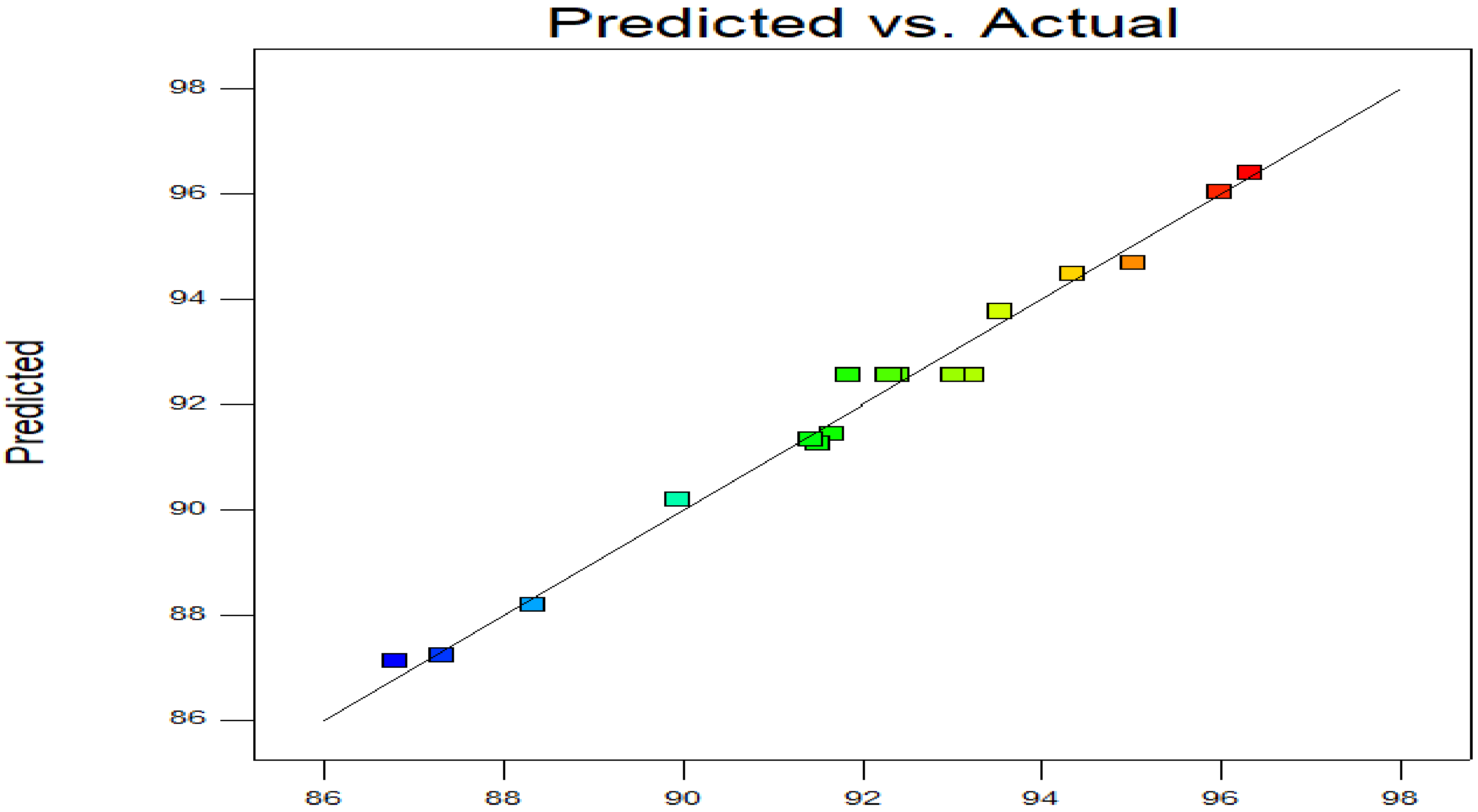
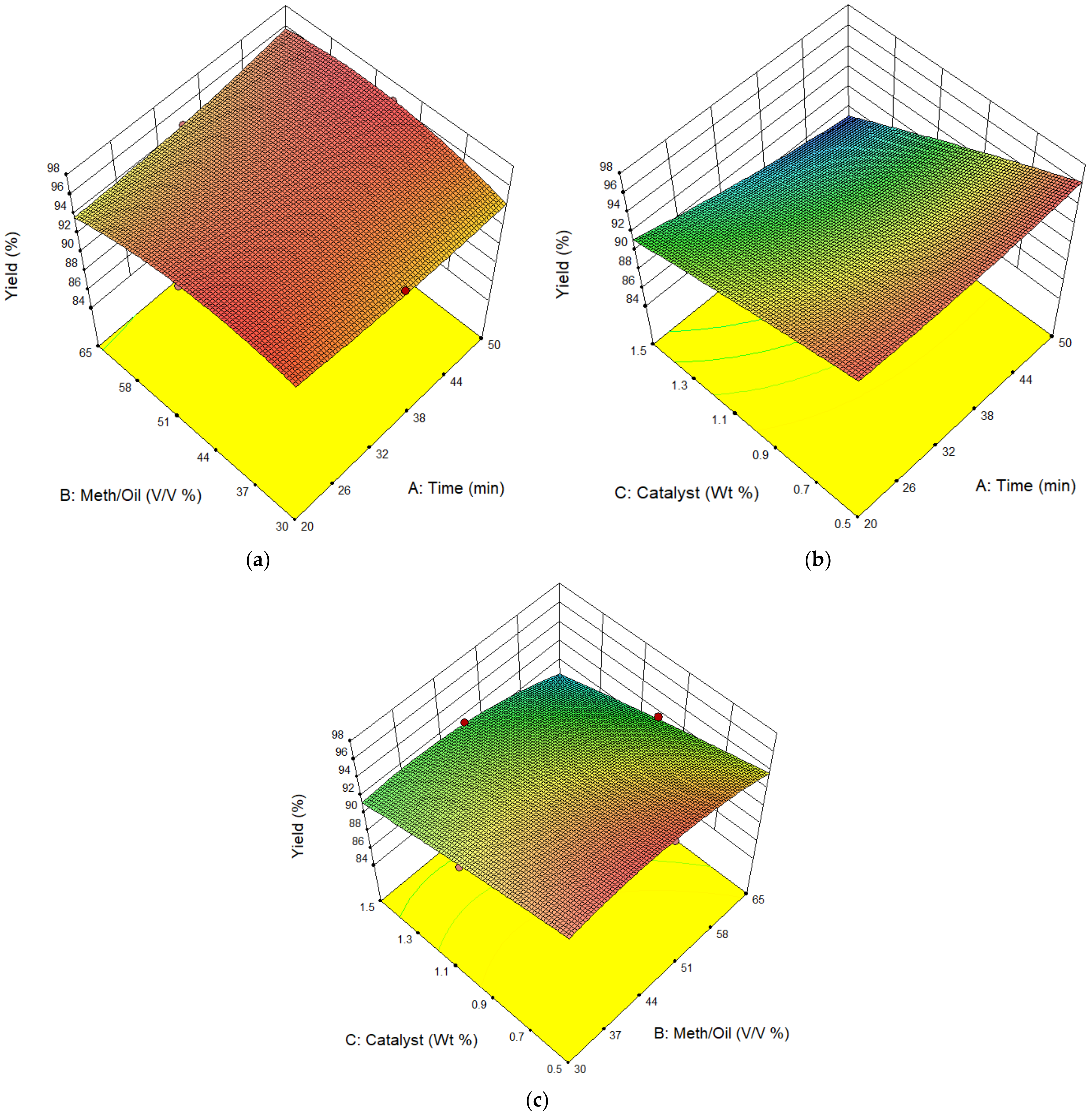


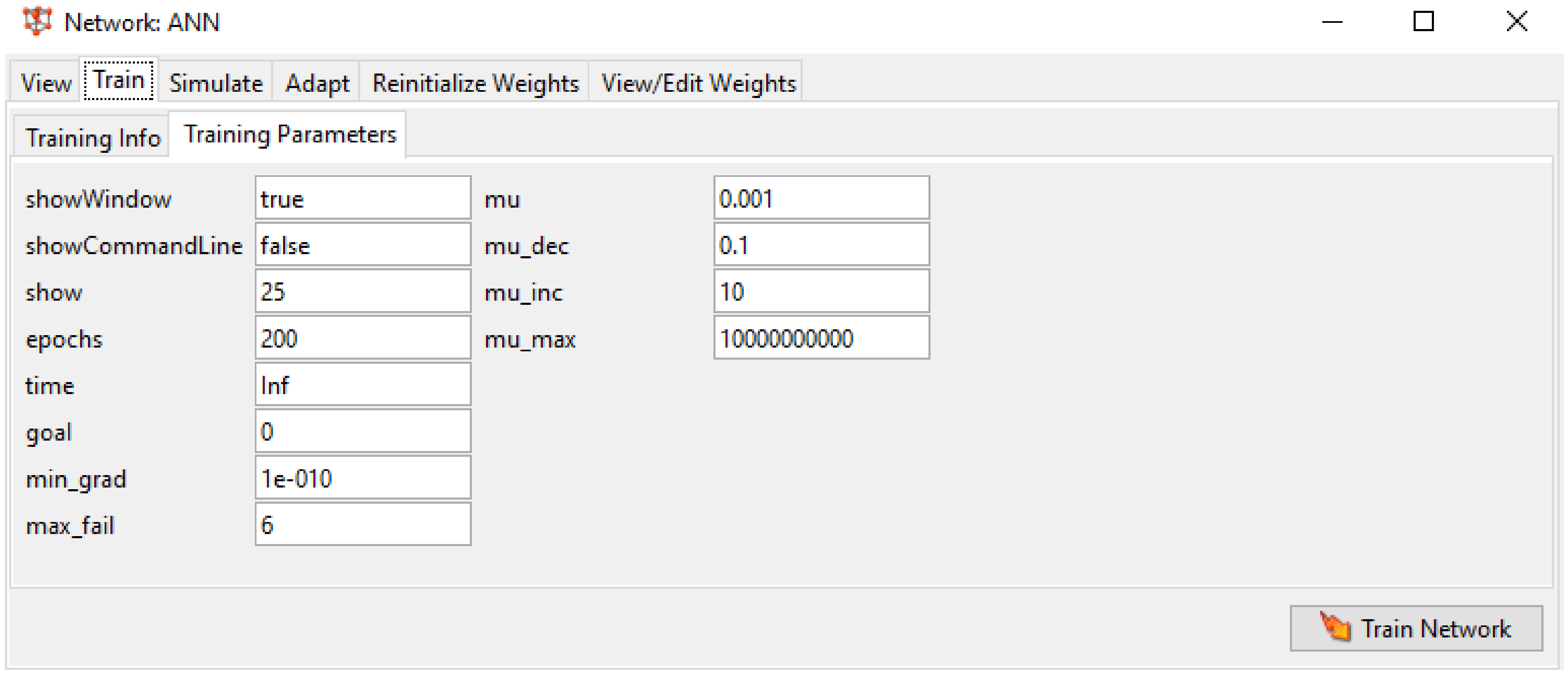


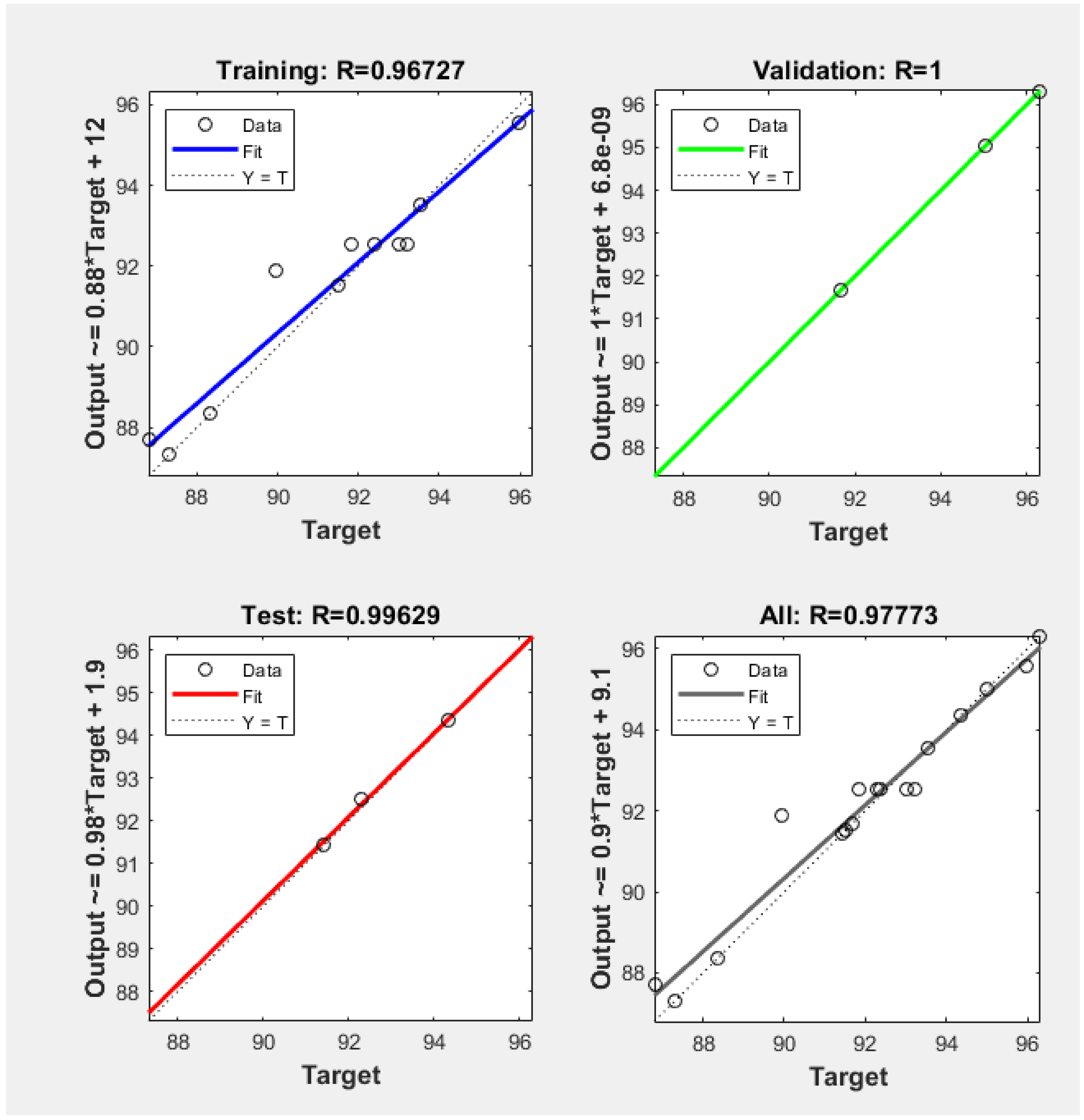


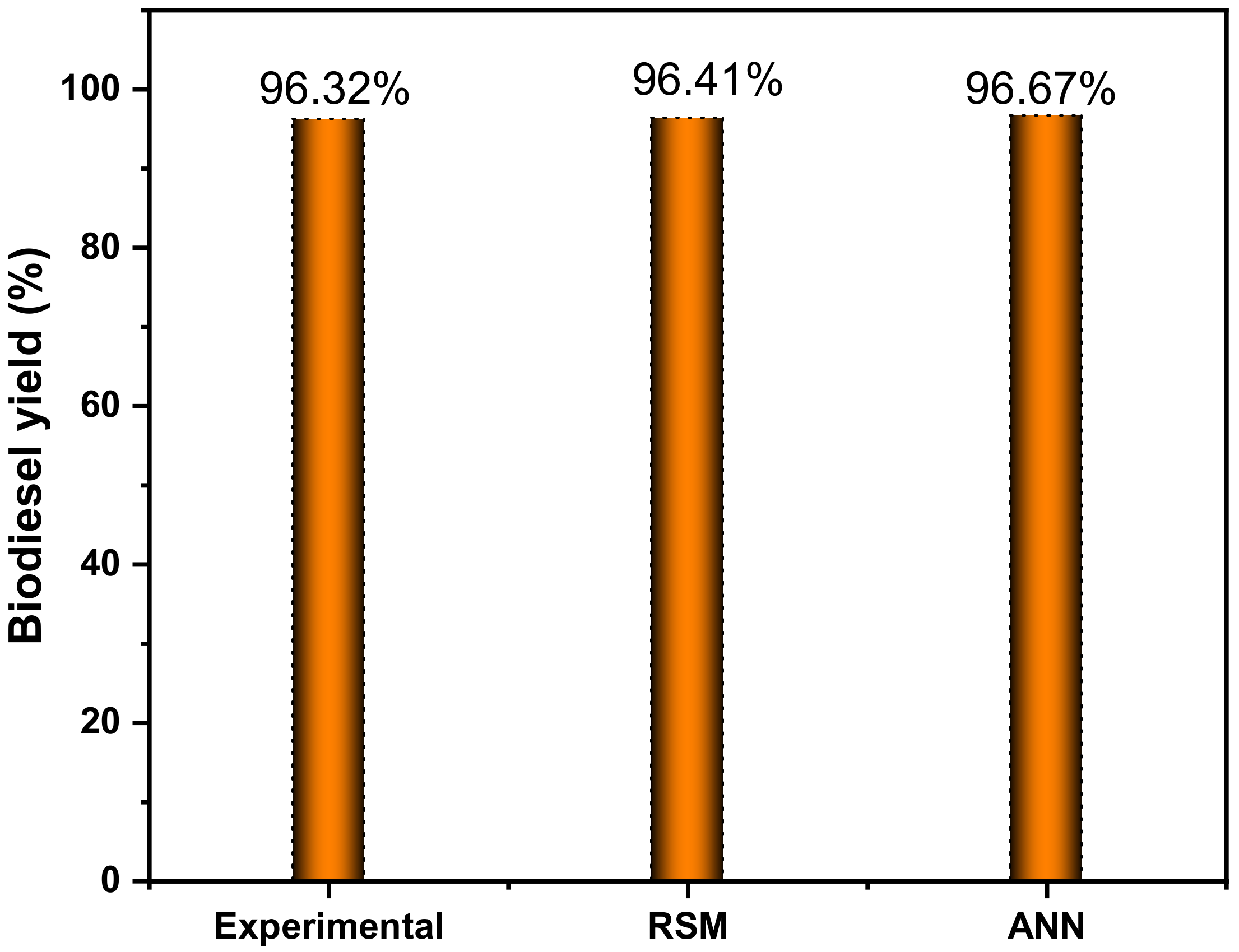
| Properties | P50C50 | P60C40 | P70C30 | P50C50BD | P60C40BD | P70C30BD |
|---|---|---|---|---|---|---|
| Density at 15 °C (kg/m3) | 0.9186 | 0.9178 | 0.9170 | 0.8792 | 0.8786 | 0.8785 |
| Viscosity at 40 °C (mm2/s) | 36.237 | 38.038 | 38.369 | 4.2041 | 4.3058 | 4.5049 |
| Acid value (mg KOH/g) | 2.78 | 3.02 | 3.72 | - | - | - |
| Calorific Value (MJ/kg) | 38.81 | 38.86 | 38.27 | 39.12 | 39.23 | 39.01 |
| Oxidation stability (h) | - | - | - | 2.03 | - | - |
| Fatty Acid Name | Structure | PB | |
|---|---|---|---|
| CB | PB + CB | ||
| Myristic acid | C14:0 | 0.90 | |
| 0.74 | 0.49 | ||
| Palmitic acid | C16:1 | 38.98 | |
| 25.17 | 32.05 | ||
| Palmitoleic acid | C16:1 | ||
| 0.57 | 0.37 | ||
| Stearic acid | C18:0 | 4.04 | |
| 3.02 | 3.63 | ||
| Oleic acid | C18:1 | 44.96 | |
| 19.52 | 34.56 | ||
| Linoleic acid | C18:2 | 10.52 | |
| 49.92 | 28.92 | ||
| Linolenic acid | C18:3 | 0.39 | |
| – | 0.26 | ||
| Erucic acid | C22:1 | ||
| 1.06 | 0.54 | ||
| Total saturated fatty acids | 43.92 | ||
| 28.93 | 30.05 | ||
| Total unsaturated fatty acids | 56.08 | ||
| 71.07 | 69.95 | ||
| Run | Time | M: O | Catalyst Concentration | Experimental Yield | Predicted Yield |
|---|---|---|---|---|---|
| minute | (v/v %) | w/w | (%) | (%) | |
| 1 | 20 | 47.5 | 1.5 | 91.43 | 91.34 |
| 2 | 20 | 47.5 | 0.5 | 95.97 | 96.05 |
| 3 | 35 | 30 | 1.5 | 88.34 | 88.19 |
| 4 | 50 | 47.5 | 1.5 | 87.32 | 87.24 |
| 5 | 35 | 65 | 1.5 | 86.8 | 87.13 |
| 6 | 35 | 47.5 | 1 | 93.21 | 92.55 |
| 7 | 35 | 47.5 | 1 | 91.84 | 92.55 |
| 8 | 35 | 47.5 | 1 | 92.3 | 93.77 |
| 9 | 20 | 30 | 1 | 93.53 | 90.19 |
| 10 | 50 | 30 | 1 | 89.95 | 92.55 |
| 11 | 35 | 47.5 | 1 | 93.01 | 96.41 |
| 12 | 50 | 47.5 | 0.5 | 96.32 | 91.27 |
| 13 | 50 | 65 | 1 | 91.51 | 91.27 |
| 14 | 20 | 65 | 1 | 91.67 | 91.43 |
| 15 | 35 | 30 | 0.5 | 95.02 | 94.70 |
| 16 | 35 | 65 | 0.5 | 94.34 | 94.50 |
| 17 | 35 | 47.5 | 1 | 92.39 | 92.55 |
| Sum of | Mean | F | p-Value | |||
|---|---|---|---|---|---|---|
| Source | Squares | df | Square | Value | Prob > F | |
| Model | 119.52 | 9 | 13.28 | 52.87 | <0.0001 | significant |
| A-Time | 7.03 | 1 | 7.03 | 28.00 | 0.0011 | |
| B-Meth/Oil | 0.79 | 1 | 0.79 | 3.16 | 0.1187 | |
| C-Catalyst | 96.33 | 1 | 96.33 | 383.54 | <0.0001 | |
| AB | 2.92 | 1 | 2.92 | 11.64 | 0.0113 | |
| AC | 4.97 | 1 | 4.97 | 19.80 | 0.0030 | |
| BC | 0.18 | 1 | 0.18 | 0.74 | 0.4193 | |
| A2 | 0.59 | 1 | 0.59 | 2.36 | 0.1686 | |
| B2 | 6.68 | 1 | 6.68 | 26.62 | 0.0013 | |
| C2 | 0.11 | 1 | 0.11 | 0.46 | 0.5210 | |
| Residual | 1.76 | 7 | 0.25 | |||
| Lack of Fit | 0.52 | 3 | 0.17 | 0.56 | 0.6703 | not significant |
| Pure Error | 1.24 | 4 | 0.31 | |||
| Cor Total | 121.27 | 16 |
Publisher’s Note: MDPI stays neutral with regard to jurisdictional claims in published maps and institutional affiliations. |
© 2022 by the authors. Licensee MDPI, Basel, Switzerland. This article is an open access article distributed under the terms and conditions of the Creative Commons Attribution (CC BY) license (https://creativecommons.org/licenses/by/4.0/).
Share and Cite
Razzaq, L.; Abbas, M.M.; Miran, S.; Asghar, S.; Nawaz, S.; Soudagar, M.E.M.; Shaukat, N.; Veza, I.; Khalil, S.; Abdelrahman, A.; et al. Response Surface Methodology and Artificial Neural Networks-Based Yield Optimization of Biodiesel Sourced from Mixture of Palm and Cotton Seed Oil. Sustainability 2022, 14, 6130. https://doi.org/10.3390/su14106130
Razzaq L, Abbas MM, Miran S, Asghar S, Nawaz S, Soudagar MEM, Shaukat N, Veza I, Khalil S, Abdelrahman A, et al. Response Surface Methodology and Artificial Neural Networks-Based Yield Optimization of Biodiesel Sourced from Mixture of Palm and Cotton Seed Oil. Sustainability. 2022; 14(10):6130. https://doi.org/10.3390/su14106130
Chicago/Turabian StyleRazzaq, Luqman, Muhammad Mujtaba Abbas, Sajjad Miran, Salman Asghar, Saad Nawaz, Manzoore Elahi M. Soudagar, Nabeel Shaukat, Ibham Veza, Shahid Khalil, Anas Abdelrahman, and et al. 2022. "Response Surface Methodology and Artificial Neural Networks-Based Yield Optimization of Biodiesel Sourced from Mixture of Palm and Cotton Seed Oil" Sustainability 14, no. 10: 6130. https://doi.org/10.3390/su14106130
APA StyleRazzaq, L., Abbas, M. M., Miran, S., Asghar, S., Nawaz, S., Soudagar, M. E. M., Shaukat, N., Veza, I., Khalil, S., Abdelrahman, A., & Kalam, M. A. (2022). Response Surface Methodology and Artificial Neural Networks-Based Yield Optimization of Biodiesel Sourced from Mixture of Palm and Cotton Seed Oil. Sustainability, 14(10), 6130. https://doi.org/10.3390/su14106130











